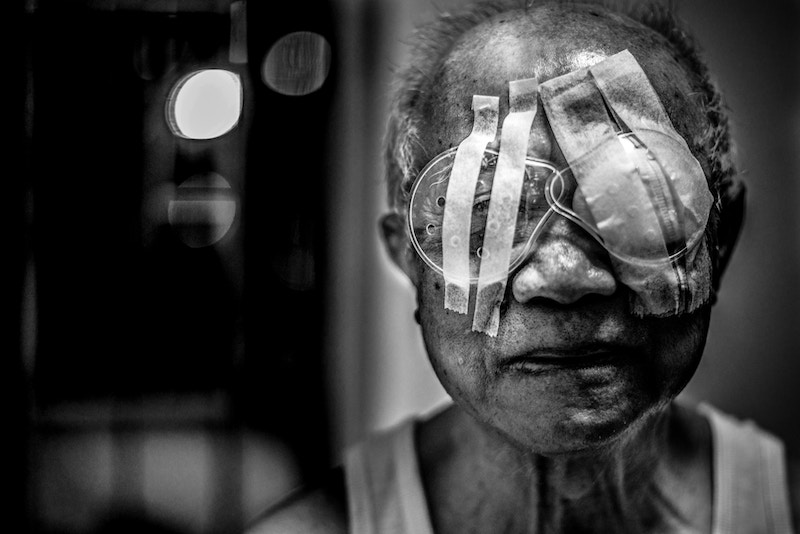The stories we tell each other collectively – sorting out the meanings of the word “narrative”, we find the fiction behind the fact.

Some words are so big that they become meaningless.
Let’s put that more precisely: Some terms are used so generally that their denotations are harder to pinpoint than people who use or people who hear such words may realize. Try to define exactly what “freedom” means, or “democracy”.
Out of the field that concerns us here, at least two terms have reached this general ‘buzzword’ status: “storytelling” and “narrative”.
There are professions and there are fields of study trying to get to grips with storytelling and narrative, for instance the profession of dramaturg or the theoretical approaches of narratology.
- Dramaturgy is defined as the craft, art, or the practice and techniques of dramatic composition or theatrical representation, where composition refers to the way in which the various parts are put together and arranged. In other words, structure.
- Narratology is defined as the study of structure in narratives or the study of narrative and narrative structure, where a narrative is something that is narrated, a representation or description of an event or series of events with the connections between them – that is, of a story.
Especially in American English, there is a second meaning to the word narrative, one that hasn’t made it into the British Collins dictionary yet and only to 2c in the OED, though by now the term is used widely in UK media in the same way as in the States and the rest of the world: “A way of presenting or understanding a situation or series of events that reflects and promotes a particular point of view or set of values“ (Merriam-Webster). In other words, ideology.
In this second definition, the term “point of view” is used generally, not in the technical or dramaturgical sense that a cameraperson or a novelist would use when talking about a scene. In the same way that PoV is a far narrower technical term within storytelling than in general use, so is “narrative” far broader in general use than among authors talking shop. Hence for technical use, we need yet another definition, one that is much more precise than what you find in a general dictionary: (more…)

How perceptive a character is of her surroundings may have dramaturgical relevance.
A character who is good at noticing small details may make a good spy or detective, so if you are developing a detective or spy you may want to give your character this ability. But whatever your character’s profession, stop at least once per scene and ask yourself,
What is a detail that only this character might notice?
Why is this important? Because their perceptions can make characters more interesting and vivid.
If a certain plot event hinges on a character perceiving some small detail or other, it may be a good idea to plant a foreshadowing moment long before the scene, to heighten the impact of the act of perception.
Furthermore, a character’s perception may influence how your audience understands and enjoys the entire story. How exactly depends on two important factors:
- narrator
- point of view
(more…)
 Today’s guest post is by author Stefan Emunds.
Today’s guest post is by author Stefan Emunds.
Stefan’s favorite genre is visionary fiction – stories that have an enlightenment dimension. Enlightenment and storytelling have interesting parallels, which prompted Stefan to write a book about storytelling – The Eight Crafts of Writing.
Get a glimpse of his approach to story craft in his article.
Art and Craft
Storytelling is both art and craft, authoring and writing, plotting and pantsing.
1.1 Art and Authoring
Art is creativity. Creativity requires receptivity to the Muse and its inspirations.
Inspirations arrive as thought-images, which writers put into words. How to turn thought-images into words and assemble those into a structured story with vivid characters and an engrossing world is a matter of craft and skill.
1.2 Craft and Writing
The literal meaning of Kung Fu is a discipline achieved through hard work and persistent practice. Writing is Kung Fu.
Craft gives form to inspirations. Forms limit. Writers love the artistic side of writing, less so crafting, in particular, Story Outline. Writers are prone to procrastinate crafting.
But no limitations, no story. No canvas, no painting. No net, no tennis.
Understanding the difference between freedom and dominion helps to appreciate the constraints of craft. Freedom is a means to an end. We want to be free to do something, for example, to write a book. That’s all there is to freedom. Dominion, on the other hand, is mastery of structure. (more…)

Nothing should be more important to an author than how their story makes the audience feel.
As an author, consider carefully the emotional journey of the reader or viewer as they progress through your narrative.
The audience experiences a sequence of emotions when engaged in a narrative. So narrative structure is a vital aspect of storytelling. The story should be touching the audience emotionally during every scene. Furthermore, each new scene should evoke a new feeling in order to remain fresh and surprising.
The author’s job is to make the audience feel empathy with the characters quickly, so that an emotional response to the characters’ situation is possible. Only this can lead to physical reactions like accelerated heartbeat when the story gets exciting. We have to care.
This “capturing” of the audience, making the reader or viewer rapt and enthralled, requires authors to create events that will show who the characters are and how they react to the problems they must face. The audience is more likely to feel with the characters as the plot unfolds when the characters’ reactions to events reveal something about who they really are – and how they might be similar to us.
One Journey to Spellbind Them All
Here we present a loose pattern that we think probably fits for any type of story, whatever genre or medium, however “literary” or “commercial”. It’s not prescriptive, just a rough checklist of the stages in the emotional journey the audience tacitly expects when they let themselves in on a story. The emotions are in more or less the order they might be evoked by any narrative.
Curiosity
(more…)
Highlight and Filter Your Scene Details.
(more…)
Three sorts of opposition, and two things to remember.

Opposition causes conflict
For any character in a story, there may be opponents, not just for the protagonist. So while the protagonist-antagonism struggle may be at the forefront of the story, actually there is a whole system of opposing forces.
Let’s examine how characters in stories work against each other.
- Opposition can come from striving for the same or for opposite ends.
- Opponents can be antagonistic or incidental.
- There are two sorts of opponents, those from without, and those from within.
Same same or different?
An author might take each character at a time and arrange their opponents, which means characters who are either trying to get to the same thing first or whose success in attaining something else would thwart the character’s efforts.
In other words, the opposition (unless it arises by chance, see below) takes the form of either competition or threat. Competition for the same goal: Who will reach the South Pole first? Threat, because the goal of the opponent is opposed to the goal of the other figure: a nature reserve or a hotel complex. Imagine this for yourself using your own example: Your opponents strive for the same goal as you, and if your competitor wins, you get nothing. So your opponents are competing with you for the same goal, for example the same person. Or your opponent wants something completely different from you, and if he achieves that, it means you cannot get what you want. The success of the opponent is therefore a threat to your own well-being.
In either case, the opposition may be … (more…)
One of the most far-reaching decisions an author must make is how to narrate the story. Or: Who is telling the story to whom under which circumstances?
To be fair, this question is a relatively new one for authors to ponder. In the pre-modern age, authors just grabbed their quills and started writing. But as novels became more sophisticated, technical questions became more explicit and relevant. Narrative voice – the matter of who is talking here, or what is this text we’re reading purporting to be – is a factor at the latest since James Joyce’ Ulysses and all the self-aware post-modern novels that followed. Previously, there had already been a difference between author and narrator. When in a novel by Charles Dickens you, dear reader, are directly addressed, then already there is some sort of discrepancy between the person saying “dear reader” to you and Charley Dickens the man. But this discrepancy didn’t become a popular topic to construct stories around until the twentieth century.
Anyway, while not a traditional archetype, and in many cases not even a participating character, the narrator is never really quite the same entity as the author either.
To begin with the basics, the standard narrator types are:
- first-person, where usually the protagonist tells his or her own story
- third-person limited, where a narrator tells a story from one character’s point of view only, meaning that the audience/reader is not told of any events that this character is unaware of
- third-person omniscient, where the narrator can relate what any of the characters are doing and thinking, and is not limited in what to present to the audience/reader
In film, first person and third-person limited effectively amount to the same thing: the audience gets one person’s perspective on the story per shot or scene (there is also the first-person “point of view” camera angle, but rarely is an entire film presented that way). In prose, first and third person is the difference between “I did this” and “she (or he) did that”. This is a stylistic choice. In the sense of what the narrator knows and tells, there is not necessarily much difference.
Close or Distant
But potentially there is big difference between narrative stance. A narrator who is limited to reporting in third person on only one character can do so “close” or “from a distance”.(more…)

One of the most important choices an author must make concerns Point of View.
In storytelling, people use the term Point of View (or PoV) to refer to different things. We’ve narrowed it down to four definitions:
- The overall perspective from which a story is told
- The scene by scene perspective of a story
- The narrator’s point of view
- Attitude or belief system of the author
Overall perspective
The entire Star Wars saga is, in very general terms, told from the point of view of the two characters that have least status: the robots C-3PO and R2-D2. They are not present in every single scene, but they are part of the overall course of events – and in a ironic tip of the hat to their function of providers of overall point of view, George Lucas has C-3PO relate the entire story so far to the Ewoks in Return of the Jedi.
George Lucas borrowed the idea from Akira Kurosawa’s The Hidden Fortress, which tells a story of generals and princesses from the point of view of two peasants. These two are involved in the action, but understand less about what they see going on than the audience does.(more…)
It’s the way you tell it.
Narrative is the choice of which events to relate and in what order to relate them – so it is a representation or specific manifestation of the story, rather than the story itself. The easy way to remember the difference between story and narrative is to reshuffle the order of events. A new event order means you have a new narrative of the same story.
Narrative turns story into information, or better, into knowledge for the recipient (the audience or reader). Each story event is a unit of knowledge the audience requires.
A narrative is paradox, because it seeks to convey truth by hiding it. A storyteller arranges the items of knowledge in such a way that they are revealed gradually, which implies initially obscuring the truth behind what is told. Such deliberate authorial obfuscation creates a sense of mystery or tension, and creates a desire in the audience to find out what is happening in the story and why. In this sense, a narrative is effectively the opposite of an account or a report.
A report presents information in order to be understood by the audience immediately, as it is being related. A neutral, matter of fact presentation probably maintains a chronology of events. It explains a state of affairs blow by blow, and aims for maximum clarity at every stage. It seeks to convey truth by simply telling it. While the point of a narrative is also that the recipient perceives the truth of the story, in a narrative this truth is conveyed indirectly. Narrative is therefore responsible for how the recipient perceives the story.
In this article we’ll look at
- Story Basics
- The Components of Story
- Text Types That Describe A Story
- Author Choices: Genre and Point of View
- Causality in Narrative
Story Basics
First, let’s state some basics as we understand them here at Beemgee: a story consists of events that are related by a narrator; events consist of actions carried out by characters; characters are motivated, they have reasons for the things they do; there is conflict involved; one and the same story may be told in different ways, that is, have varying narratives.
Note that we are talking here about narrative in the dramaturgical sense – not in the social sense. Like the term “storytelling”, the word “narrative” has become a bit of a buzzword. We are not referring here to open “social narratives” such as “the American narrative”. For the definition and exploration of such collective narratives, see our article in The Bigger ‘Narratives’ of Society. Here, we are pinpointing the use of the term primarily for storytellers creating novels, films, plays, and the like. Such works tend in their archetypal form to be closed narratives with a beginning, a middle, and an end.
A narrative may present the events of the story in linear, that is to say chronological order or not. But the story remains the story – even if it is told backwards.(more…)






